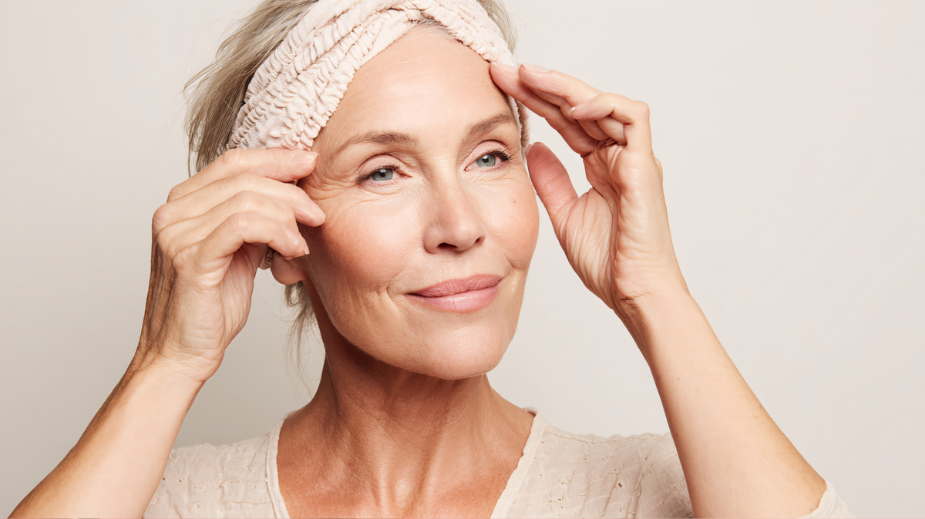Inside the Ageing Face: What Really Happens Beneath the Skin Understanding the True Anatomy of Ageing — and How to Work With It, Not Against It

If you are seeking the most effective treatments for your skin, the first step is understanding what truly occurs beneath the surface as we age. At Magical Medicine, we believe that informed self-care begins with knowledge. In a world of “miracle” serums, collagen boosters, and so-called “age-defying” products, discernment is essential. Let’s look beyond the marketing and explore what really shapes your face over time.
1. Skin: The Surface Layer
Here’s an often-overlooked fact: the outermost layer of your skin—the stratum corneum—is composed of non-living cells that form a protective barrier [1]. While this layer is vital for maintaining hydration and defending against environmental stressors, it does not regenerate from topical products alone. Effective care focuses on supporting the skin barrier through consistent cleansing, hydration, and protection [2]. The visible signs of ageing, however, originate far deeper.
2. Muscles: The Architects of Expression
Most facial muscles are mimetic muscles, responsible for the expressions that communicate our emotions. Unlike other muscles in the body, they connect bone to soft tissue rather than bone to bone—meaning every smile, frown, or raised brow subtly reshapes the face [3].
Over time, certain muscles tighten while others weaken, creating imbalances that contribute to fine lines, sagging, and asymmetry. Regular facial yoga and self-massage can help to correct these imbalances by toning underactive muscles, releasing tension, and improving microcirculation [4].
3. Fatty Tissue: The Cushion of Youth
Beneath the muscles lie delicate fat pads, which provide the soft contours associated with a youthful appearance. As we age—or due to weakened muscles and poor posture—these fat pads can migrate downwards, resulting in a hollow or drooping look [5].
In Ayurvedic philosophy, this process reflects a Vata imbalance—a state of dryness and loss of structural integrity [6]. Nourishing the body with healthy fats such as ghee, avocado, nuts, seeds, and cold-pressed oils helps preserve the suppleness and lubrication of these tissues.
4. Bones: The Structural Foundation
Ageing also affects the underlying bone structure of the face. Bones gradually lose density and volume, providing less support to the tissues above [7]. This results in a narrower facial frame and the appearance of sunken eyes. Gentle facial exercise can stimulate bone metabolism through subtle muscular engagement, supporting long-term strength and definition [8].
5. Botox vs. Face Yoga: Two Very Different Pathways
Botox delivers immediate wrinkle reduction by temporarily paralysing the muscles responsible for expression [9]. However, beneath the surface, several physiological consequences occur:
Reduced blood and lymphatic flow may impair nourishment and detoxification [10].
Inactive muscles can lead to compensatory tension elsewhere, disrupting facial symmetry.
Lack of movement diminishes natural bone stimulation.
The body must also metabolise the botulinum toxin, placing additional demand on the liver—an organ which, according to Ayurvedic understanding, directly influences skin clarity and pigmentation [11].
While Botox provides instant visual results, it effectively presses “pause” on natural facial movement while internal ageing continues.
By contrast, facial yoga works in harmony with the body’s innate intelligence. It restores muscular balance, enhances circulation, encourages lymphatic drainage, and supports genuine vitality from within.
The Bottom Line
When the body is nourished with high-quality proteins, essential fats, complex carbohydrates, vitamins, and minerals, it naturally sustains the deeper structural tissues that define the face.
Feed the fatty tissues with wholesome, natural fats. Exercise your facial muscles to maintain tone and encourage healthy bone stimulation. Release unnecessary tension, as chronic contraction is one of the primary causes of fine lines and wrinkles.
Finally, maintain a simple, intentional skincare ritual. The best skincare for mature skin is not about excess—it’s about alignment. Cleanse, moisturise, protect, and choose products that work in synergy with your body’s natural processes. Magical Medicine’s prana-infused formulations are designed to restore balance, support cellular renewal, and enhance radiance from the inside out.
Because true beauty does not resist time—it flows with it, gracefully, consciously, and with vitality.
References
Elias PM. Skin barrier function and its importance in maintaining skin health. J Invest Dermatol. 2005.
Rawlings AV, Harding CR. Moisturisation and skin barrier function. Dermatol Ther. 2004.
Standring S. Gray’s Anatomy: The Anatomical Basis of Clinical Practice. 42nd ed. 2020.
Koko J et al. Effects of facial exercise on facial rejuvenation: a review. Aesthetic Surg J. 2018.
Rohrich RJ et al. Facial fat compartments: anatomical basis of facial ageing. Plast Reconstr Surg. 2008.
Lad V. Textbook of Ayurveda, Vol. 1. Ayurvedic Press, 2002.
Shaw RB Jr et al. Facial bone changes in the ageing process. Aesthetic Plast Surg. 2011.
Taguchi A et al. The relationship between facial bone density and masticatory muscle activity. Bone. 2010.
Carruthers A, Carruthers J. Botulinum toxin type A for facial wrinkles. Dermatol Clin. 2004.
Kim DW et al. Effects of botulinum toxin on local circulation and lymphatic drainage. Toxins. 2017.
Halpern JL et al. Mechanisms of botulinum toxin clearance and detoxification. Toxicon. 2011.


